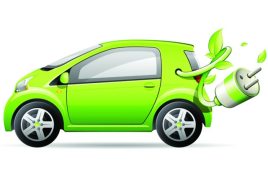Hang on! There are different types of tyres? Well they do say you learn something new every day!
To many, tyres are just black rubber circular shaped things covering your wheel – if you are one of these people then I’m afraid you are very wrong and definitely not giving them enough credit. Tyres are in fact a very complex item of your vehicle and can be bought with many different features and characteristics.
There are three main different types of tyre in which you can purchase;

winter tyres – summer tyres – all-season tyres.
But which is best? Which should I buy? I hear you scream!!
Unfortunately, there is no simple answer to this but here at Canterbury Motoring World we have put together a few pointers to hopefully help make the decision a little easier for you.
Firstly, we shall start we the reasons one may want to purchase winter tyres:
- In some colder European countries, it is actually within the Law to use winter tyres between certain dates of the year
- Winter tyres have certain characteristics which make them more effective on icy/snowy roads. They are manufactured using a special rubber, they have extra cuts in them and they have a wider tread which makes them have a stronger traction.
- You have a reduced braking distance when using winter tyres – in fact tests show they halve your breaking distance on snow by as much as 33 metres.
- Many drivers say that using winter tyres gives them more confidence when on the road as you feel as though you have a lot more control of the car
- Most would disagree and say that having to pay out for a different set of tyres for the winter months of the year is not cost effective. However, by using two different sets for the different weather periods of the year means that both sets are less likely to wear out as quick.
Secondly, let’s have a quick look at the reasons one may want to purchase summer tyres:
- They have a better responsiveness on dry roads due to them having active breaking technology
- Their 3D bubble blade interlocking system allows for them to have a better handling than winter tyres
And thirdly, before we make any final conclusions, here are some reasons why one may want to purchase all-season tyres:
- If the country that you live in has mild winters where the temperature tends to remain above 7 degrees Celsius or you don’t have the storage facilities to accommodate a second set of tyresthen all-season tyres would be an ideal option
- They are designed to offer a combination of the benefits offered from the specific winter and summer tyres.
Here in the UK using is not compulsory as many parts of the country rarely experience weather conditions that would justify them and actually many drivers would generally choose to avoid driving when experiencing extreme wintery weather conditions outside.
For this above reason, here at Canterbury Motoring World we believe that all-season tyres are more than suitable enough for the majority of our customers. If you are looking to buy a new set, then please feel free to give us a call so we can assist you in this and please bear in mind these three points of advice:
please bear in mind these three points of advice:
- Always buy a full matching set as tyres can have different tread patterns and their performance features can vary
- If you are after winter tyres you can be sure that you are in fact purchasing a winter set as they will have the 3PMSF Mountain Snowflake symbol on their sidewall
- And although the EU Tyre label gives you all the necessary basic safety information, it is always recommended that you speak to your local tyre dealer regarding the specific characteristics that the set of tyres you are buying hold. In addition to this, we suggest carrying out independent tyre tests where possible.
To conclude, whichever type of tyre you choose to purchase is ultimately down to a personal preference and what would give you the most sense of security when driving. Just remember if you do choose to use two different sets of tyres throughout the year that you should switch to your winter tyres when the temperature outside starts to regularly drop below 7 degrees Celsius and not swap back to your summer/all-season tyres until the outside temperature starts to regularly be above 10 degrees Celsius.
Author: Rebecca McGinty
Related past Canterbury Motoring World blogs:
 r best blog post of 2016? – the blog which received the most views over the past year is the one that we think all would agree offers the Canterbury Motoring World customers some invaluable information… “Canterbury Motoring World’s Top Tips on Buying a Second Hand Car!”.
r best blog post of 2016? – the blog which received the most views over the past year is the one that we think all would agree offers the Canterbury Motoring World customers some invaluable information… “Canterbury Motoring World’s Top Tips on Buying a Second Hand Car!”.

 the scenes within a car dealership can be easily overshadowed by the sales side of the business so a special shout out to all our lovely admin girls!
the scenes within a car dealership can be easily overshadowed by the sales side of the business so a special shout out to all our lovely admin girls!

 , they include the following:
, they include the following: fuel – you want this to be carried out as soon as possible so second step is too call the fuel assist service as soon as you can. If you happen to drive away from the fuel station before noticing you have put the wrong fuel in your car, you won’t get too far before your car comes to a halt and you’ll soon notice the mistake you have made. Make sure you try and pull up in a safe spot before calling the specialist fuel assist department of your breakdown company and they will send you some road side assistance.
fuel – you want this to be carried out as soon as possible so second step is too call the fuel assist service as soon as you can. If you happen to drive away from the fuel station before noticing you have put the wrong fuel in your car, you won’t get too far before your car comes to a halt and you’ll soon notice the mistake you have made. Make sure you try and pull up in a safe spot before calling the specialist fuel assist department of your breakdown company and they will send you some road side assistance. First things first! What is a hybrid car? You may have heard the term being thrown around in the media and by those campaigning for a “greener” planet! But like many others, do you feel slightly in the dark about what a hybrid vehicle is? Personally, I think it sounds like some kind of transformer!
First things first! What is a hybrid car? You may have heard the term being thrown around in the media and by those campaigning for a “greener” planet! But like many others, do you feel slightly in the dark about what a hybrid vehicle is? Personally, I think it sounds like some kind of transformer! responsibility of both the cyclists and the drivers of our roads to ensure that the above statistic doesn’t increase!
responsibility of both the cyclists and the drivers of our roads to ensure that the above statistic doesn’t increase! l have their own purpose and meaning:
l have their own purpose and meaning: when needing to get your hands on a replacement car key, and you’ll be pleased to know that some don’t have to cost the earth!
when needing to get your hands on a replacement car key, and you’ll be pleased to know that some don’t have to cost the earth!
 please bear in mind these three points of advice:
please bear in mind these three points of advice: